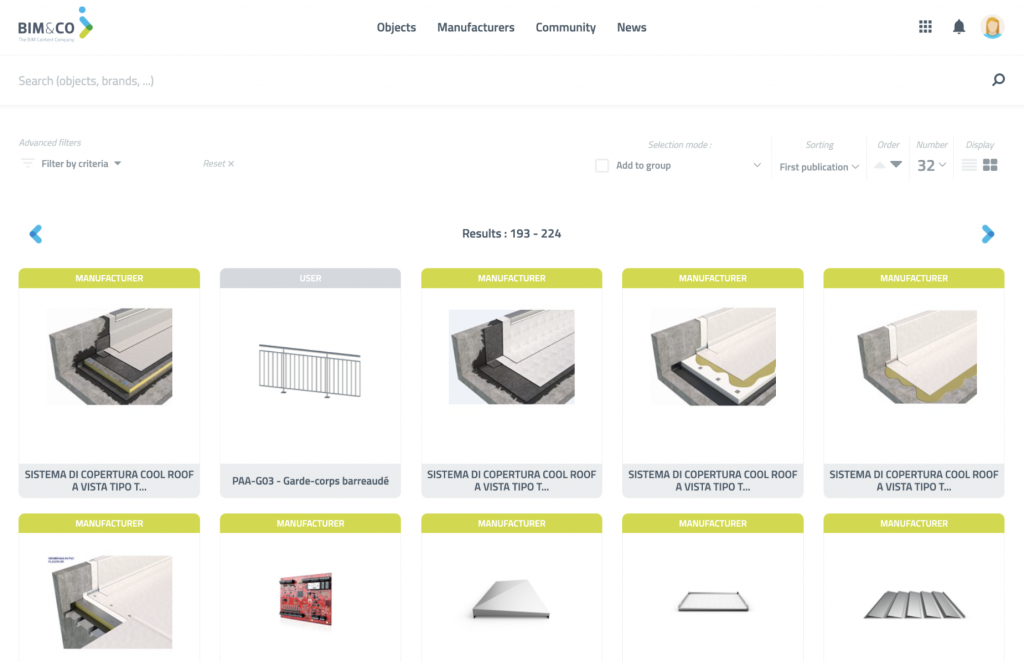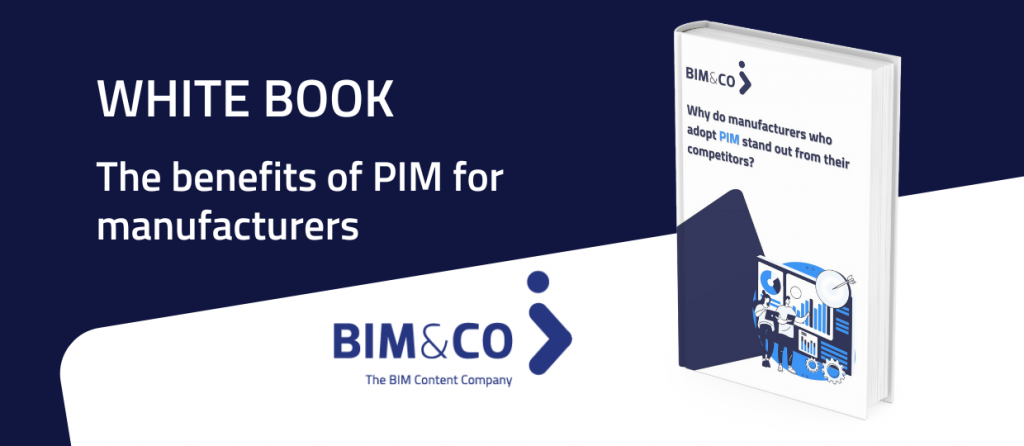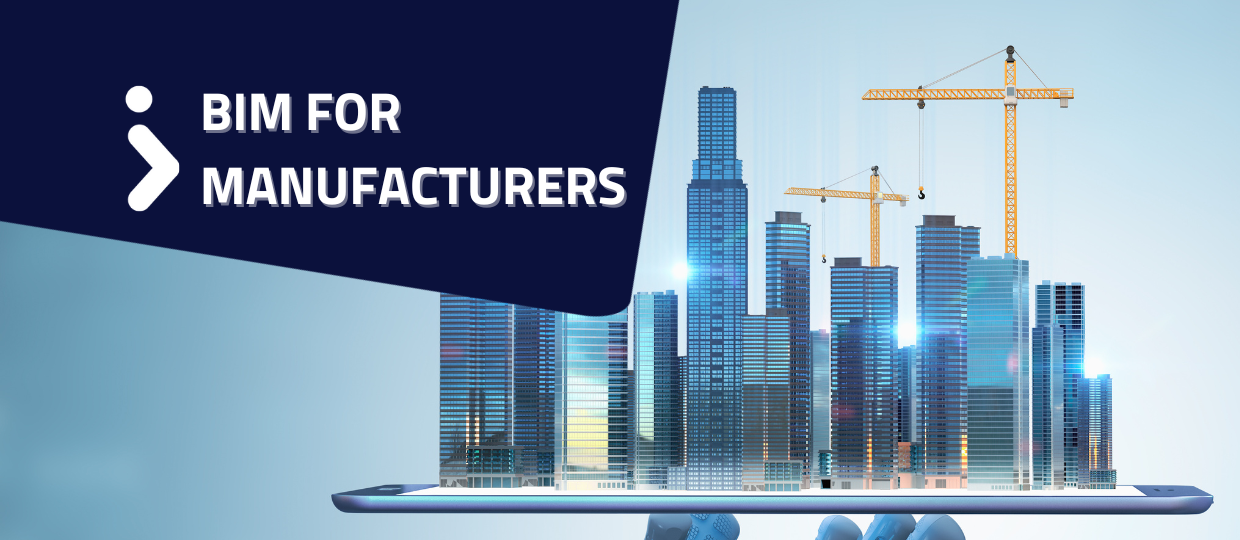Looking for solutions to digitalise your construction projects? Whether you are a manufacturer, an architect, an engineer or a builder, there are solutions for all types of construction professionals.
Let’s find out which solutions you can implement to digitalise your construction projects!
1) Implementing Building Information Modeling in your construction projects
The BIM methodology allows a virtual representation of manufacturers’ products and materials used in construction. Composed of technical specifications and 3D modelling, designers, architects and engineers upload BIM objects to fill their digital mock-ups.
There are many advantages to this methodology! BIM is the ideal tool to anticipate the viability of a building and to have a more rigorous follow-up of a construction site. It also reduces design errors and improves productivity and communication during construction. By using BIM, it is also easier to determine the roles of the different actors in a construction project. BIM also allows the use of structured and accurate data to ensure that information is exchanged without loss.
These benefits are driving more and more governments around the world to implement policies and regulations for the deployment of BIM solutions in construction. According to Allied Market Research, Denmark, Spain and Italy have made BIM 100%, 93% and 82% mandatory respectively.
Now that we have the various benefits of this methodology in mind, let’s find out how BIM is particularly beneficial to manufacturers.
2) Ensuring the digitisation of manufacturers’ product catalogues via a public and cloud platform
Manufacturers sometimes struggle to digitalise their products. And yet, they have a lot to gain by doing so! Why? Because BIM revolves around the data of a building. And these buildings depend to a large extent on the characteristics of the products installed.
So to build ever more efficient buildings using BIM, the AEC players who collaborate in this process, namely architects, engineers and construction companies, greatly require product information… from manufacturers. According to Harvard Business Review (2020), 73% of AEC organisations say that having a highly collaborative relationship with manufacturers is extremely or very important to the success of their construction projects.
The role of manufacturers in this process is therefore essential. They are the most likely to provide reliable and quality data for engineering and architectural firms. Therefore, by digitising their product catalogues in BIM format, manufacturers will be more likely to be contacted to be part of engineering and architectural projects. It’s a win-win situation!
But how do you digitise your products? With the public and Cloud platform bimandco.com, manufacturers of all types can publish their products in 3D format. In this way, they are visible and downloadable free of charge by the building industry, which needs them to feed their digital models.
Find out more about the benefits of BIM for manufacturers in our article: “BIM for manufacturers: A necessary digital transformation to stand out and sell more“
3) Centralising the BIM content of AEC players via a library of 3D objects
Once manufacturers’ 3D objects and their data have been uploaded by digital mock-up designers, they need to be shared with key players in a common project. The increasing digitalisation of the construction industry is proving particularly useful.
According to a study by Coleman Parkes, 79% of construction companies are not yet using a digital platform to share key information with their teams. The consequences? 97% of respondents to the survey said they find it difficult to work collaboratively.
To address this, we recommend centralising BIM content in a common and collaborative space: a BIM library. BIM&CO‘s Onfly solution enables AEC companies to manage, centralise and harmonise BIM data. In this way, they accelerate the design process and increase the productivity of their teams. All content is in a common space, shared with the desired actors. Searching, integrating and downloading BIM content is done quickly, ensuring smoother progress in projects.
To help you set up a simple, readable and efficient BIM library, we offer you a practical, easy-to-use guide. Discover how to create a BIM library in 10 steps!
4) Implementing the use of PIM for manufacturers
BIM for manufacturers is good, PIM is even better.
Let’s start at the beginning. PIM, or Product Information Management, is a tool for centralising all the data concerning the products offered by a company. This data is collected upstream from various sources. It is then processed so that there is only one version of the product. The aim is simple: to homogenise the information, to obtain a single source of truth. This is a real lever for marketing your products on multiple distribution channels.
Download our free guide to discover the benefits of adopting a PIM for manufacturers, and how it will set you apart from competition.
And to go even further, let’s discover the “PIM2BIM“. BIM&CO has developed this API, allowing easy interconnection to all standard solutions, and private business solutions (AS/400…) Today, providing quality, compliant and consistent product information is essential for manufacturers.
With the use of “PIM2BIM“, manufacturers update their BIM object data in real time, without having to use a third party tool to update your 3D files.
5) Taking an interest in virtual reality in your construction projects
This last solution is more relevant to construction professionals working in the EXE phase.
Virtual reality allows them to immerse themselves in a site, building or space in a realistic digital environment. The user can move around and interact with the environment using goggles or controllers.
Virtual reality has many benefits in construction projects. Firstly, being able to immerse oneself in the virtual reality of a space allows potential defects and construction conflicts to be identified before work begins. This saves time, money and manpower.
Secondly, it is a question of recreating the different situations that installers and builders may face during work. It is then possible for the teams to train themselves to react to potential dangers and thus reduce accidents.
Also, virtual reality enhances the experience of the end customer and property buyers during virtual site visits. They dive into the future project without distortion of reality. They can see more clearly and will more easily project themselves and validate the necessary aspects. With tools such as usBIM.reality and Certus HSBIM, it will be very easy for you to use virtual reality in your construction projects.
Would you like to take the leap into the digitalisation of your construction projects? Our team at BIM&CO will be happy to accompany you in this digital transition. Whether you are in the AEC sector or a manufacturer, we will give you the keys to successfully digitalise your projects. Contact us today!








